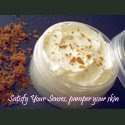
Lavender is best known and loved for its fragrance.
The herb has been used since ancient times in perfumery.
As an aromatic plant, lavender lifts the spirits and chases
melancholy. Taking just a few whiffs of this sweetsmelling
herb is said to dispel dizziness. Traditionally,
women in labor clutched sprigs of lavender to bring
added courage and strength to the task of childbearing. A
decoction of the flower may be used as a feminine
douche for leucorrhoea. The dried blossoms, sewn into
sachets, may be used to repel moths and to scent clothing,
or may be lit like incense to scent a room. Because
of its fumigant properties, the herb was hung in the home
to repel flies and mosquitoes, and strewn about to sanitize
the floors. Lavender essential oil was a component
of smelling salts in Victorian times.
The essential oil of certain lavender species has a
sedative, antispasmodic, and tranquilizing effect. Lavender
has been long valued as a headache remedy. It can be
taken in a mild infusion, or can be rubbed on the temples,
or sniffed like smelling salts to provide relief from
headaches caused by stress. Lavender oil is antiseptic, and
has been used as a topical disinfectant for wounds. In high
doses, it can kill many common bacteria such as typhoid,
diphtheria, streptococcus, and pneumococcus, according to
some research. The essential oil has also been used as a
folk treatment for the bite of some venomous snakes.
When used in hydrotherapy as part of an aromatic,
Epsom salt bath, the essential oils of some species will
soothe tired nerves and relieve the pain of neuralgia. They
are also used topically on burns and have been shown to
speed healing. It is also a fine addition to a foot bath for
sore feet. Lavender essence makes a pleasant massage oil
for kneading sore muscles and joints. Acting internally,
lavender’s chemical properties increase the flow of bile
into the intestines, relieving indigestion. Its carminative
properties help expel intestinal gas. Lavender is an adjuvant
and may be used in combination with other herbs to
make a tonic cordial to strengthen the nervous system.
A 2002 report from Korea showed that aromatherapy
massage with lavender oil and tea tree oil on patients
undergoing hemodialysis for kidney failure received
relief from the itching the treatment often causes.

Preparations
The medicinal properties of lavender are extracted
primarily from the oil glands in the leaf and blossom. The
plant contains volatile oil, tannins, coumarins, flavonoids,
and triterpenoids as active chemical components. These
phytochemicals are the plant constituents responsible for
the medicinal properties. Lavender’s volatile oil is best
when extracted from flowers picked before they reach
maximum bloom and following a long period of hot and
dry temperatures. The flower spikes dry quickly when
spread on a mat in an airy place away from direct sun.
Distilled oil: The essential oil of lavender is extracted
by steam distillation. Just a few drops of this essential
oil are effective for topical applications. Commercial distillations
of this essential oil are readily available.
Lavender tea: An infusion of the fresh or dried flowers
and leaf can be made by pouring a pint of boiling
water over one ounce of the dry leaf and flower, or two
ounces fresh herb, in a non-metallic pot. It can be
steeped (covered) for about ten minutes, strained and
sweetened to taste. It should be drunk while still warm.
Lavender tea may be taken throughout the day, a mouthful
at a time, or warm, by the cup, up to three cups per
day. Lavender works well in combination with other
medicinal herbs in infusion.
Lavender oil extract: In a glass container, one ounce
of freshly harvested lavender flowers can be combined
with 1-1/2 pints of olive oil, sufficient to cover the herb.
It should be placed in a sunny windowsill for about three
days and shaken daily. After three days, the mixture
should be strained through muslin or cheesecloth. More
fresh flowers should be added and the process repeated
until the oil has the desired aromatic strength. Lavender
extract can be safely used internally to treat migraines,
and nervous indigestion. A few drops on a sugar cube
can speed headache relief. Externally, a small amount of
lavender oil, rubbed on sore joints, can relieve rheumatism.
The essential oil has also been used to minimize
scar tissue when applied to burned skin.
Lavender sachet: Dried lavender blossoms and
leaves can be sewn into a small cloth bag to scent linens
and deter insects. The bag may be placed beneath the pillow
as an aromatherapy.
Lavender vinegar: Fresh leaves and blossoms may
be steeped in white vinegar for seven days, then strained
and stored in a tightly capped bottle.

Precautions
Lavender has a long history of use as an essential oil
and as a mildly sedative tea. When taken in moderation
the tea is safe. It is important to note that, as with all essential
oils, high or chronic doses of lavender essential
oil are toxic to the kidney and liver. Infants are even
more easily overdosed than adults.
Interestingly, lavenderís relaxant effects were put to
the test in a 2002 study on aromatherapyís effects on improved
mental or physical performance. It seems that
study subjects who smelled lavender actually did worse
on mental tests than those who smelled nothing at all. So
those choosing to use lavenderís soothing effects should
perhaps choose the timing carefully.
Side effects
No known side effects.
Interactions
As an adjuvant, lavender can enhance the helpful
properties of other herbs when used in combination.
Lemon balm (Melissa officinalis) leaves can be combined
with lavender as a headache infusion. For cramping, an infusion
of lavender and valerian (Valeriana officinalis)
makes a soothing tea. Lavender’s pleasant scent works
well to cover disagreeable odors of other herbs in medicinal
combinations. A tonic cordial can be made by combining
fresh rosemary (Rosmarinus officinalis) leaves, cinnamon,
nutmeg, and sandlewood with the lavender blossoms
and steeping the mixture in brandy for about a week












4 comments:
I love lavender! And tag, you're it!
http://plaidfuzz.blogspot.com
wow great write up, i actualy love lavendar and now have even more reasons to like it so much, although if i was in labour i would want something stronger than a bunch of lavendar stuck in my face ha ha!! enjoyed reading thanks for sharing! :O)
lol....sock monkey!!! I dont know what I would do to that bunch of dry lavender in my face in THAT situation...lol
Thanks for the post. Valuable information here that I didn't know. I absolutely love lavender essential oil. It's one of my favorites.
Post a Comment